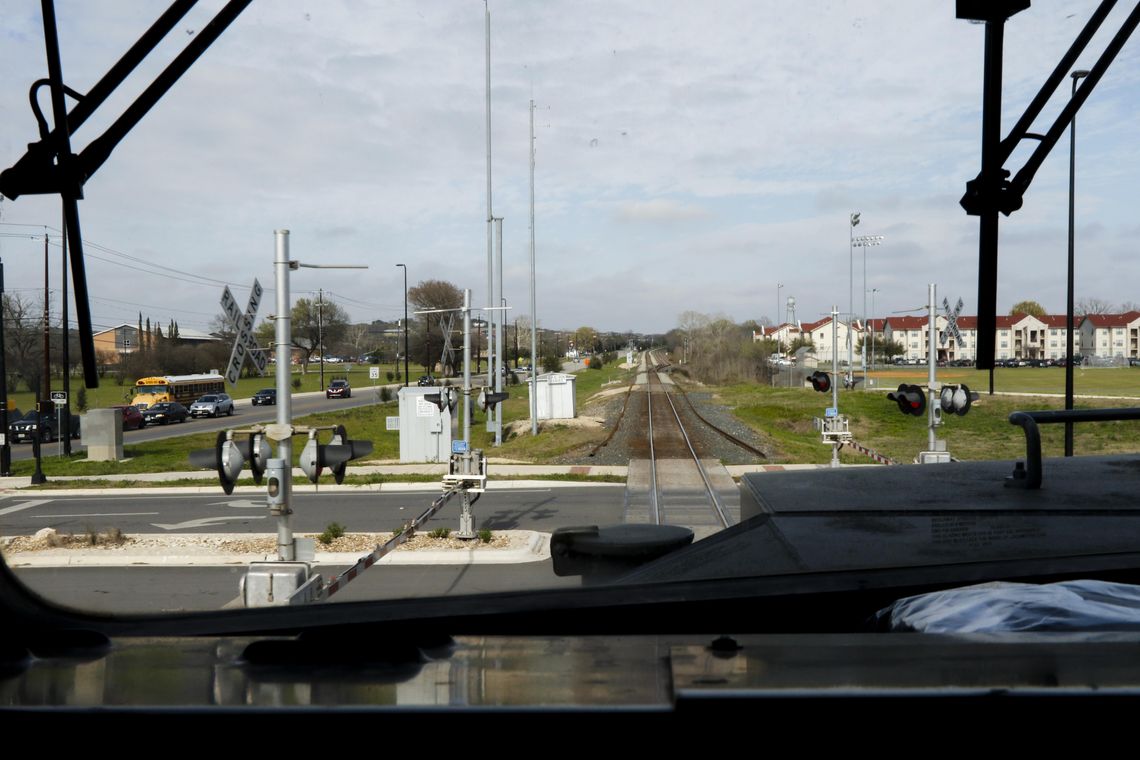With more than 30 trains per day passing through San Marcos (according to the city website) and more than a dozen railroad crossings in town, there are plenty of opportunities to choose between risking lives or playing it safe when a train is coming. On Tuesday, Union Pacific Police and local law enforcement officers teamed up to see what kind of behavior drivers, bicyclists and pedestrians engage in once the lights start flashing at railroad crossings in San Marcos.
Special Agent Alfredo Rodriguez with the Union Pacific Police rode along the tracks in San Marcos with locomotive engineer Martin Fluitt and conductor Paul Rockowitz at the helm. Rodriguez communicated with local police officers stationed near railroad crossings whenever he saw someone breaking the law. Daily Record staff were allowed to ride along with Rodriguez.
Almost immediately after the locomotive pulled away from the Amtrak platform just south of the Guadalupe Street crossing, Rodriguez saw motorists racing the crossing arms. Two cars went across the LBJ Street crossing while the bars lowered. One pedestrian walked briskly across the tracks at Hopkins Street near the river after the lights began flashing.








